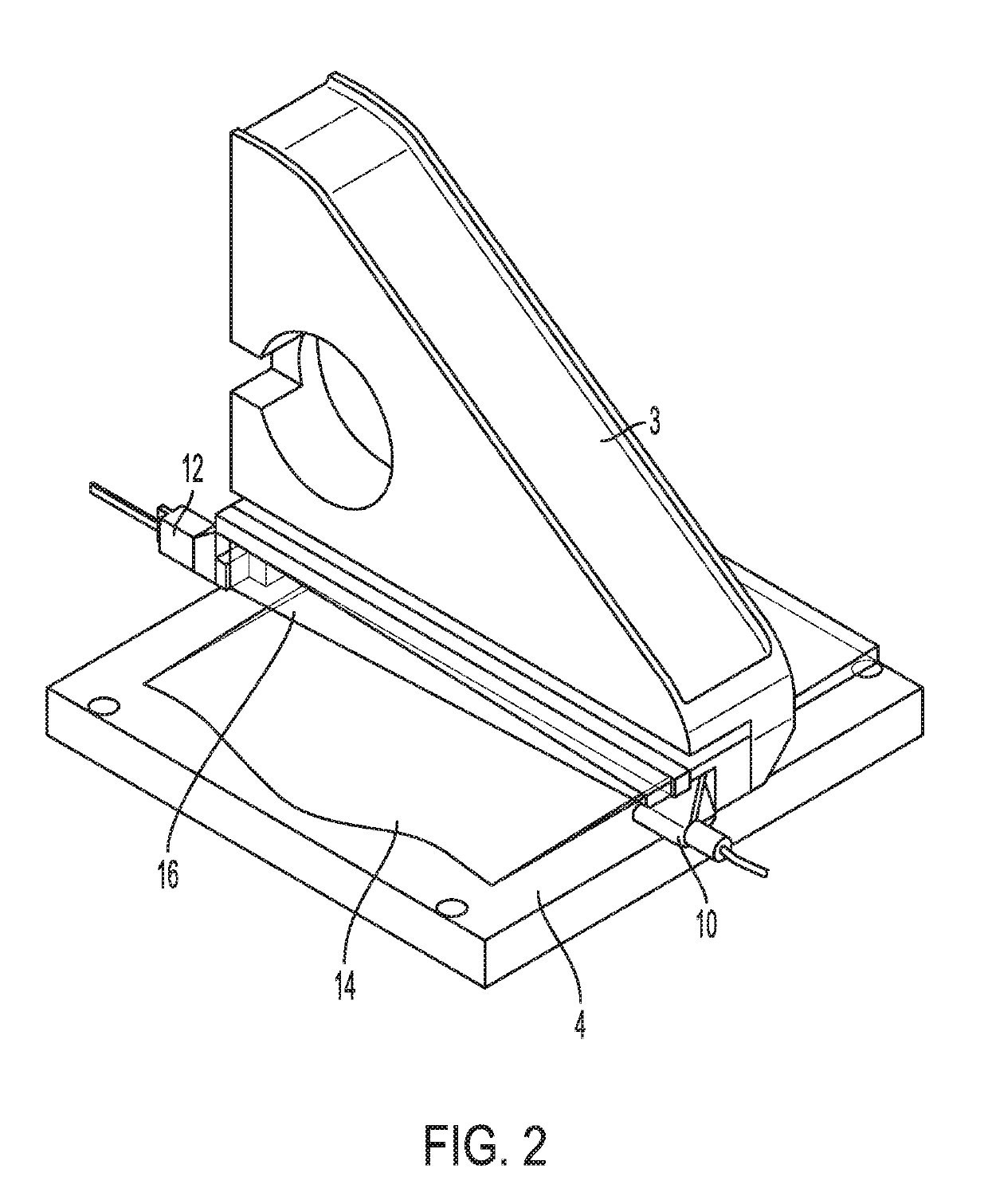Optical Powder Spreadability Sensor and Methods for Powder-Based Additive Manufacturing
a spreadability sensor and optical sensor technology, applied in the field of additive manufacturing, can solve the problems of less than satisfactory results for another type of build procedure, insufficient to fully describe the spread behaviour, and may not be visible on the upper surface of the build, so as to optimize the smoothness of the optical sensor output, and improve the quality of the additive manufacturing process
- Summary
- Abstract
- Description
- Claims
- Application Information
AI Technical Summary
Benefits of technology
Problems solved by technology
Method used
Image
Examples
Embodiment Construction
[0045]As noted, the present disclosure has found particular application in the production of objects, or workpieces, in an additive manufacture process which utilizes a radiant beam of energy, such as a laser, to solidify a fluent material, such as a powder, in a layer-wise build-up of the object. In a typical process of this type, a layer of powder is spread and smoothed over the top plane or surface of a build area in which the object is being generated. Each layer corresponds with a two-dimensional “slice” of the object, which is then solidified (e.g., fused, melted, sintered) from the powder. The object is built up by moving the solidified layer(s) incrementally downwardly in the build chamber, and a fresh layer of powder then being spread by a recoater (sometimes also referred to as a doctor blade, applicator, slide, refreshing device, roller and other names), which takes a charge or load of material deposited in front of the recoater and then moves that material across the bui...
PUM
| Property | Measurement | Unit |
|---|---|---|
| Width | aaaaa | aaaaa |
| Surface smoothness | aaaaa | aaaaa |
| Energy | aaaaa | aaaaa |
Abstract
Description
Claims
Application Information
 Login to View More
Login to View More - R&D
- Intellectual Property
- Life Sciences
- Materials
- Tech Scout
- Unparalleled Data Quality
- Higher Quality Content
- 60% Fewer Hallucinations
Browse by: Latest US Patents, China's latest patents, Technical Efficacy Thesaurus, Application Domain, Technology Topic, Popular Technical Reports.
© 2025 PatSnap. All rights reserved.Legal|Privacy policy|Modern Slavery Act Transparency Statement|Sitemap|About US| Contact US: help@patsnap.com



